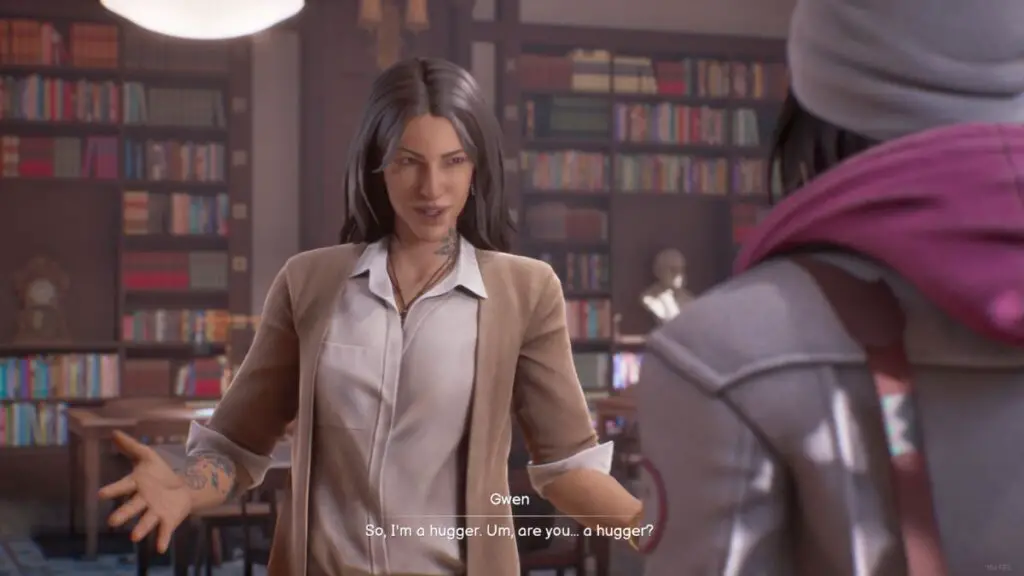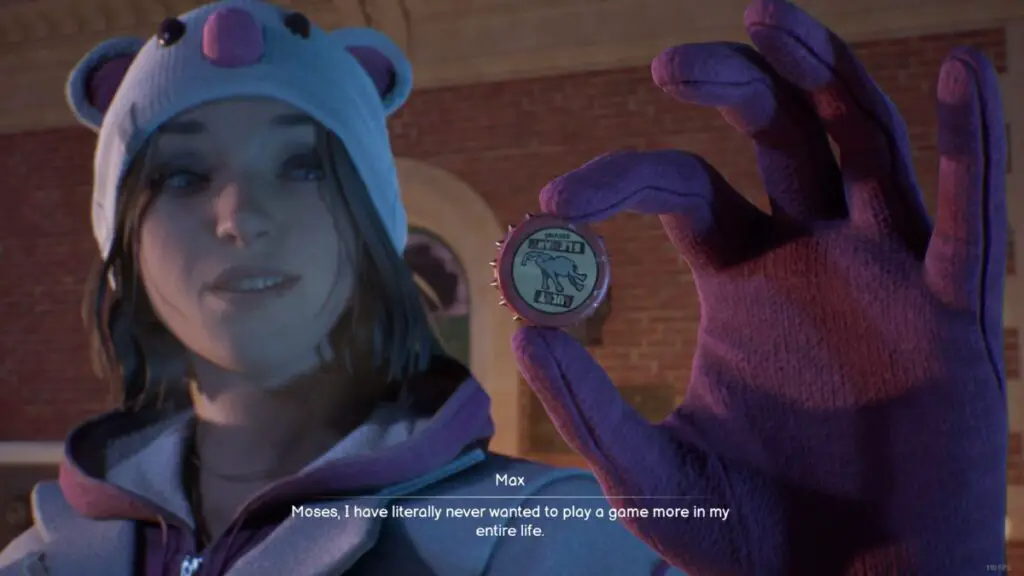The first two chapters of Life is Strange: Double Exposure are out, and before the release of the other three chapters, I’ve taken the opportunity to share my thoughts on how the story is going so far. Life is Strange has always been one of those feel-good games for me. Deciphering the connections between various characters and solving a mystery that ultimately ends in a way that you don’t expect is something that I love about Deck Nine’s narrative-driven games. While Double Exposure does have its positives, it is not building up to be my favorite so far, mostly because the team seems to have taken the character development they typically had in previous titles and thrown it out the window. Let’s break down what did and didn’t work in the first two chapters.

Knowing Caledon University
Life is Strange: Double Exposure takes place at Caledon University – a made-up location in Vermont inspired by the state’s various colleges. This setting, in my opinion, is perfect for a mystery such as this. After spending time in Vermont, I know that it is a place that Max’s character would be drawn to thanks to its artsy aesthetic and chill vibes. Most of the towns also feel like they are ripped straight out of an indie music soundtrack so that is a bonus. Similar to Arcadia Bay, everything at Caledon feels like a walking art piece. Max often references Arcadia Bay which can come up in different ways depending on your choices but the references to the original game help set the mood for this moment in Max’s life and the wintery landscape of Vermont helps drive home both the dark nature of the story along with the uplifting time of year.
The team at Deck Nine did an amazing job reviving the art style of Life is Strange and enhancing it with modern technology. The art is something I have always enjoyed in these games and it is nice to see it with a fresh coat of paint (or pixels). Adding the natural beauty of Vermont to Life is Strange feels right for the series and for the characters involved in the game. Major props to the devs going the extra mile with environments.

The Tangled Web We Weave
It wouldn’t be a Life is Strange game without the focus on human connection and social interactions, which is why it’s sad to say that I am disappointed in what the devs have shown so far in the game. Where previous titles had many moments where you connected with those around you, Double Exposure feels like it fast-tracks all moments where characters could be developed for the sake of throwing in more major choices.
The first half of chapter one is meant to be, from a writing standpoint, the “normal world.” That is if you are going by the Hero’s Journey. During this time, the team is supposed to set up the main character and major supporting characters who appear throughout the game. These supporting characters are Safi and Moses (A.K.A. your supposed best friends). My only issue here is that Max doesn’t appear to be close to these two at all. You have a short moment with Safi that is mostly focused on Max talking about how she loves to break into abandoned buildings and take pictures, and then another moment at the bar where Max, again, is the main focus of attention. Since we already know Max (assuming you played the first game), we don’t need to know so much about her. Our attention should be on Safi and building the relationship up so we care when she meets her tragic end. Unfortunately, we know extremely little about this character and are forced to piece together her entire life when the big death scene comes, which the developers have been building up for months and focusing the game around. For having such a pivotal piece of the story, Safi is an underdeveloped character that is hopefully fleshed out much more post-mortem in the remaining chapters.
The same can be said about Moses. While he seems like a fine character on the surface, when you do more investigating and try to focus more on his character, you discover that there is surprisingly little there. He likes astrology and is an astrophysicist who makes some stupid choices. Most of the first two chapters are spent ignoring his character until Max needs to help him. During that time, you learn nothing about him besides little tidbits that you read or hear from Max’s inner dialogue.

Caledon: The Good and the Bad
Another major oversight that I feel must be addressed is the lack of natural reactions that characters have in the first two chapters. It seems like Deck Nine went out of its way to make sure that every character would react in a way that we wouldn’t expect them to. For instance, when we eavesdropped on Gwen and got ratted out, I told her we were worried about her. She then goes off about how she shouldn’t be pitied. Not the reaction I would have expected from a grown adult.
Later on, you are tasked with helping Moses retrieve an item from his office. During this time, you must evade detection. When a major piece of evidence is moved in a way that is noticed by both the character you are evading and Moses, their reactions are boiled down to “What the?” and “Yo… What?” Both of these are seriously underwhelming reactions to a major event happening. During this time, you can also interact with what should be a noisy vent but the character you are evading doesn’t hear you at all despite being about 10 feet away from your location.
On the other side, the first part of Double Exposure does have positives. Max is still her lovable self from the previous games with a great voice actor who plays the part very well. Hannah Telle does an amazing job giving life to Max with quirky and witty comments that bring life to the world of Life is Strange. There were multiple times that I cracked a smile or laughed thanks to Max’s dialogue.
Choices make up a massive part of any Life is Strange game and the ones in Double Exposure are much more difficult to make than those in past games. While some of this is true because you aren’t sure how a character will react, there are moments where making the right call is extremely difficult because you want to do the right thing and your instincts might be telling you that it is the wrong call. These moments make the world feel very real and they keep you on your toes.






